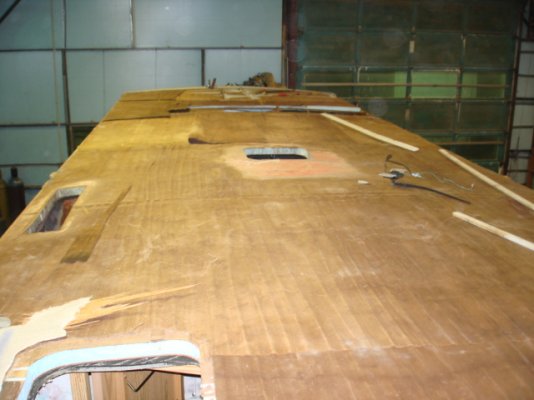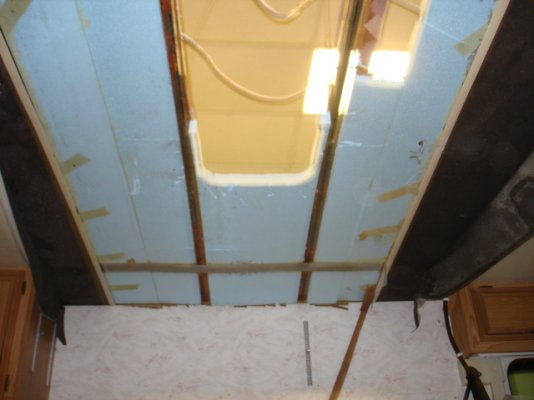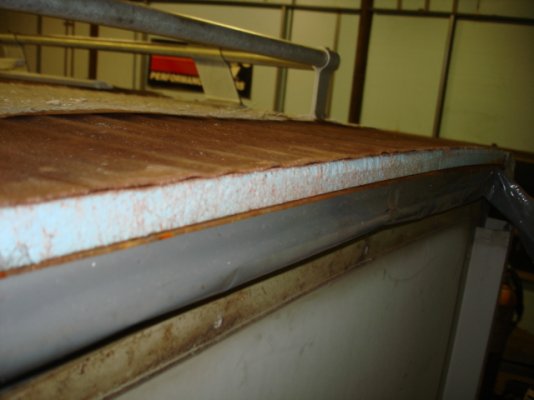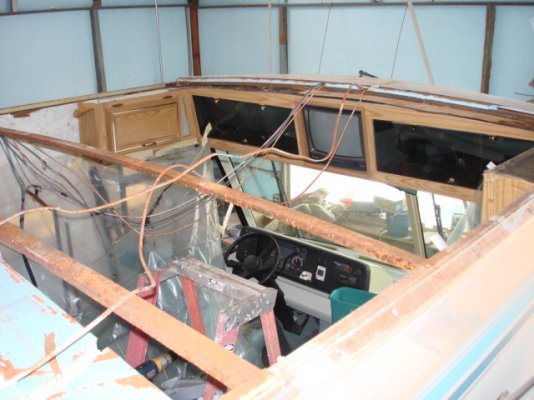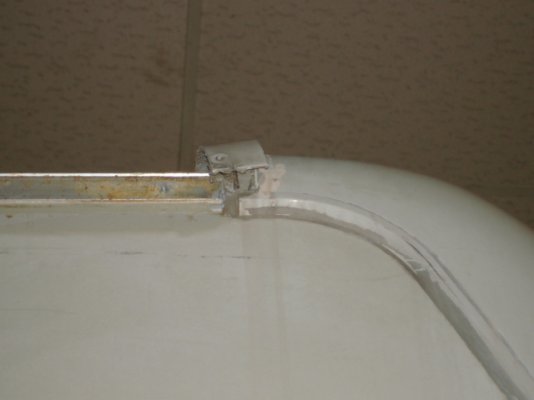ColoradoRV
New member
- Joined
- May 21, 2009
- Posts
- 3
My husband and I are starting a TOTAL roof replacement on a 1993 Itasca Class A RV. Both inside and outside roof. We have no experience with this, and are hoping to get as much input form anyone with advice.
Yes, we need to do both sides, because all wood is totally water damaged, and headliner has fallen in entire coach. Roof is sagging inside as well. (Bought this used)
I have read many of the roof replacement posts and cannot find enough similar to compare. Please bear with me while I sound ignorant, mostly because I am!
1. I am shocked to see how terribly THIN the roof structure is. The total thickness of roof is about 6" or less- is this common? Just a thin sheet of Luan inside (like 5mm) then 2" of foam, then the top sheet of Luan again.
2. When replacing this, should we be going thicker, or staying with the same setup?
3. We have metal framing going across the width of RV, not wood like I see in alot of the posts- is this a bad thing or good thing? Should we change it?
4. We are going from an old fiberglass roof, to EPDM roofing. I don't see that the old Luan is screwed into anything- is this possible? We have been able to just tear it off- no screws.
5. The roof overhangs on the sides- when tearing off old roof, there were rounded foam inserts in there (like quarter round) is this something that is still sold, and where?
6. Having a real tough time getting the front metal strip off. Any advice?
7. At this point, I feel we should only replace one section (4x8) at a time, so we can see where the holes for things were, and wires, etc. I am afraid if we rip everything off, we won't know what went where. Will this make it easier or harder?
Thank you in advance for your patience and any advice. I can post pictures if that will help.
Yes, we need to do both sides, because all wood is totally water damaged, and headliner has fallen in entire coach. Roof is sagging inside as well. (Bought this used)
I have read many of the roof replacement posts and cannot find enough similar to compare. Please bear with me while I sound ignorant, mostly because I am!
1. I am shocked to see how terribly THIN the roof structure is. The total thickness of roof is about 6" or less- is this common? Just a thin sheet of Luan inside (like 5mm) then 2" of foam, then the top sheet of Luan again.
2. When replacing this, should we be going thicker, or staying with the same setup?
3. We have metal framing going across the width of RV, not wood like I see in alot of the posts- is this a bad thing or good thing? Should we change it?
4. We are going from an old fiberglass roof, to EPDM roofing. I don't see that the old Luan is screwed into anything- is this possible? We have been able to just tear it off- no screws.
5. The roof overhangs on the sides- when tearing off old roof, there were rounded foam inserts in there (like quarter round) is this something that is still sold, and where?
6. Having a real tough time getting the front metal strip off. Any advice?
7. At this point, I feel we should only replace one section (4x8) at a time, so we can see where the holes for things were, and wires, etc. I am afraid if we rip everything off, we won't know what went where. Will this make it easier or harder?
Thank you in advance for your patience and any advice. I can post pictures if that will help.

